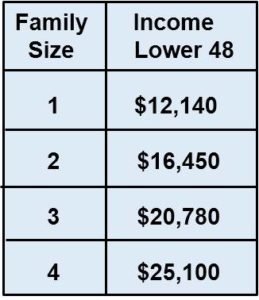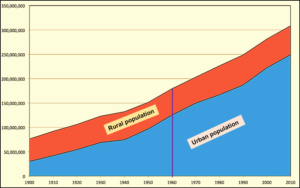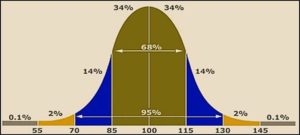
What are the causes of poverty in America?
Federal government statistics indicate that nearly 40 million people in the United States are living near or below the currently established level of poverty. Some may be existing that way by choice, but most are not. Unfortunately, as noted above, many people are dealing with one or more of the physical or mental problems, and some are dealing with significant social and economic changes which have occurred in the past 60 years. All of these conditions exist in our modern society, and individuals have virtually no control over them. This situation is exacerbated as our population expands, with more people and fewer available decent paying jobs.
A common but basically inaccurate reaction to this situation suggests that most, if not all, of these millions who are living in poverty are doing so by choice. In other words, they are considered simply too lazy to get a job and support themselves, presumably preferring to live off of government welfare programs. That may be true for some, but unfortunately it is not the situation for most. Such a blanket statement suggests a significant lack of awareness or understanding of the conditions discussed above.

An unpleasant feature of human society, which began with the development of agriculture about 10,000–12,000 years ago, has been the occurrence of poverty. As population has increased, so has the number of people living in poverty. As noted in numerous research articles, most poverty is found in rural areas where people are poorly educated, mostly employed in agriculture, and under 18 years old. However, within developed countries such as the United States, poverty has also become common in inner city areas.
Based on U.S. Census Bureau 2017 estimates, the poverty rate in the country is 12.3 percent. That translates to 39.7 million Americans who lived in poverty according to the official measure, which is considered a conservative estimate. Consider some of the factors which contribute to poverty (Figure 1).
So what are the causes of poverty in America? Here are some of the underlying factors.
Population growth within the United States

U.S. population increased from about 180 million in 1960 to about 325 million in 2017 (Figure 2). Most of this increase has been within urban areas. Combined with decreasing industrial and manufacturing jobs, which began in the late 1960s, this growth has generated inner-city areas where unemployment, poverty, and violence have increased.
The role of intelligence
Consider the graph below (Figure 3), which represents a statistical representation of the intelligence quotient of humans in the United States. It is based on various IQ tests which have been administered in public schools since the early 1900s. Although there are valid arguments that the test is culturally biased to some degree, nonetheless it provides an important statistical model for a significant biological characteristic of human populations. There is also significant evidence that IQ, as well as other personality and physical characteristics, are negatively affected by social conditions such as poverty, poor quality of family life, lack of early and significant exposure to education, poor diet, and other factors during early childhood.

If we consider the bell curve above, it becomes evident that within our technologically driven society, there are over 52 million with an IQ of 85 or less. These people may not possess the mental skills to successfully survive, let alone actually thrive in our current society, and essentially they can be considered mildly to significantly disabled. How might this factor into urban poverty?
People who are physically challenged or incapacitated
The Department of Commerce and the U.S. Census Bureau estimate that about 10 percent of Americans, or roughly 32 million, have some form of moderate to severe disability. Here are some common examples of such disabilities listed in the ADA (Americans with Disability Act). Within each category are different types and levels of impairment: back or spinal injuries, psychiatric or mental impairments, neurological impairments heart impairments, and hearing impairments.
Certainly, there exists a significant overlap within the two areas of lower intelligence and physical disability, but we are still looking at somewhere between 16 and 20 percent of our population, or 52–64 million people. More than 64 percent have difficulty hearing, 43.7 percent have difficulty seeing, 41.3 percent have a mental disability, and 33.5 percent have difficulty walking.
Of these two groups of Americans with low to challenged IQs and those with some type of physical or mental disability, which are not necessarily mutually exclusive, what are their opportunities for education? What are their opportunities for employment in jobs paying a livable, or even a minimum, wage? What are their opportunities for receiving health or other care-giving services? What are their chances of understanding and successfully surviving in the rapidly evolving technological and information age in which we live? And finally, what do these factors contribute to inner-city poverty? Furthermore, what can and has been done to alleviate these problems? These questions will be considered in a following article.
Changing opportunities for employment
From its heyday in the 1960s, changing global economic conditions and changes in technology have radically altered the types of jobs available in the United States. Decent paying full-time jobs and careers with benefits in manufacturing and production industries have significantly decreased. Many of these industries have been outsourced to other countries, and some have simply disappeared. These conditions have severely affected the middle class. Service-level jobs have increased, but the pay for these is significantly less, and many are at minimum-wage levels. Additionally, many are not full time, and many do not offer benefits. One example that I am familiar with is the large number, over 60 percent nationwide, of adjunct faculty at colleges and universities. Almost all of these positions, which are filled with people having advanced degrees, are part-time positions with no benefits. Such a faculty member most likely will need another job to have a decent income.
Within the United States, a person may be living in poverty because he is mentally or physically challenged and therefore unable to obtain or keep even a minimal-level job. Many may be literally trapped in a situation where their livelihoods have disappeared, like coal miners auto assembly plant workers steel workers, etc. They may even have full-time jobs, but their low wages may still trap them in or near the poverty level.
How, then, do we as a society handle this significant problem, which affects tens of millions of Americans? What can be done to alleviate this problem? Does our society even care? Certainly, this is not a problem with a simple solution. It would be worthwhile to consider some possible solutions which might alleviate poverty and its associated problems.
The viewpoints expressed above are those of the author and do not necessarily reflect those of The Independent.
How to submit an article, guest opinion piece, or letter to the editor to The Independent
Do you have something to say? Want your voice to be heard by thousands of readers? Send The Independent your letter to the editor or guest opinion piece. All submissions will be considered for publication by our editorial staff. If your letter or editorial is accepted, it will run on suindependent.com, and we’ll promote it through all of our social media channels. We may even decide to include it in our monthly print edition. Just follow our simple submission guidelines and make your voice heard:
—Submissions should be between 300 and 1,500 words.
—Submissions must be sent to editor@infowest.com as a .doc, .docx, .txt, or .rtf file.
—The subject line of the email containing your submission should read “Letter to the editor.”
—Attach your name to both the email and the document file (we don’t run anonymous letters).
—If you have a photo or image you’d like us to use and it’s in .jpg format, at least 1200 X 754 pixels large, and your intellectual property (you own the copyright), feel free to attach it as well, though we reserve the right to choose a different image.
—If you are on Twitter and would like a shout-out when your piece or letter is published, include that in your correspondence and we’ll give you a mention at the time of publication.
Articles related to “What are the causes of poverty in America?”
Human population growth: Is the explosion a blessing or a curse?



